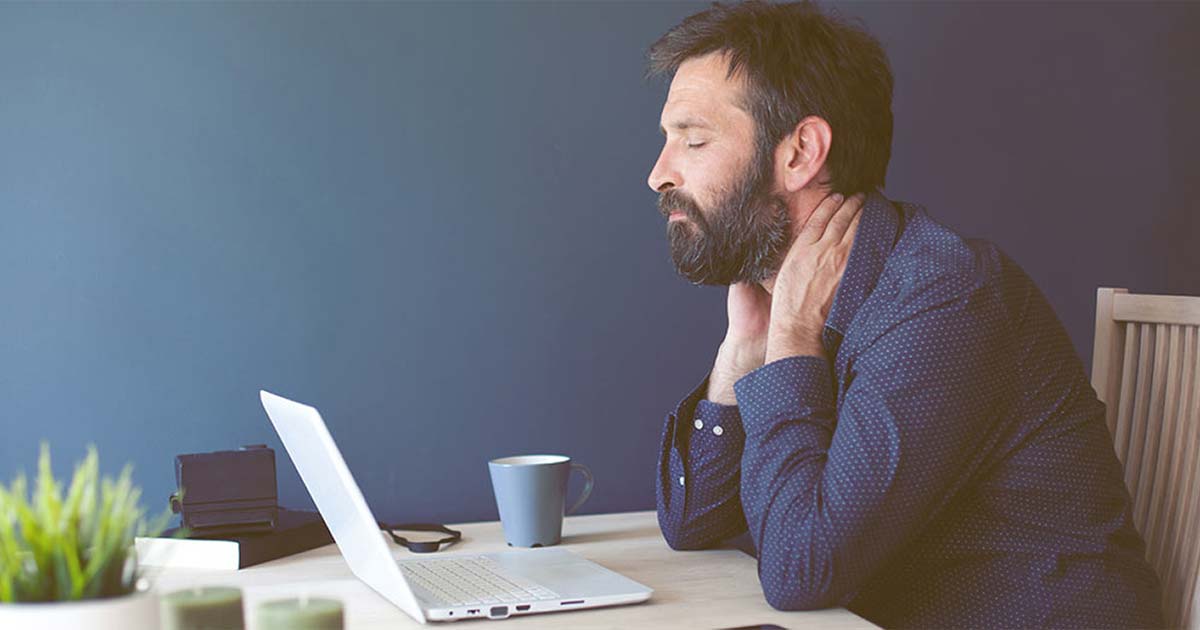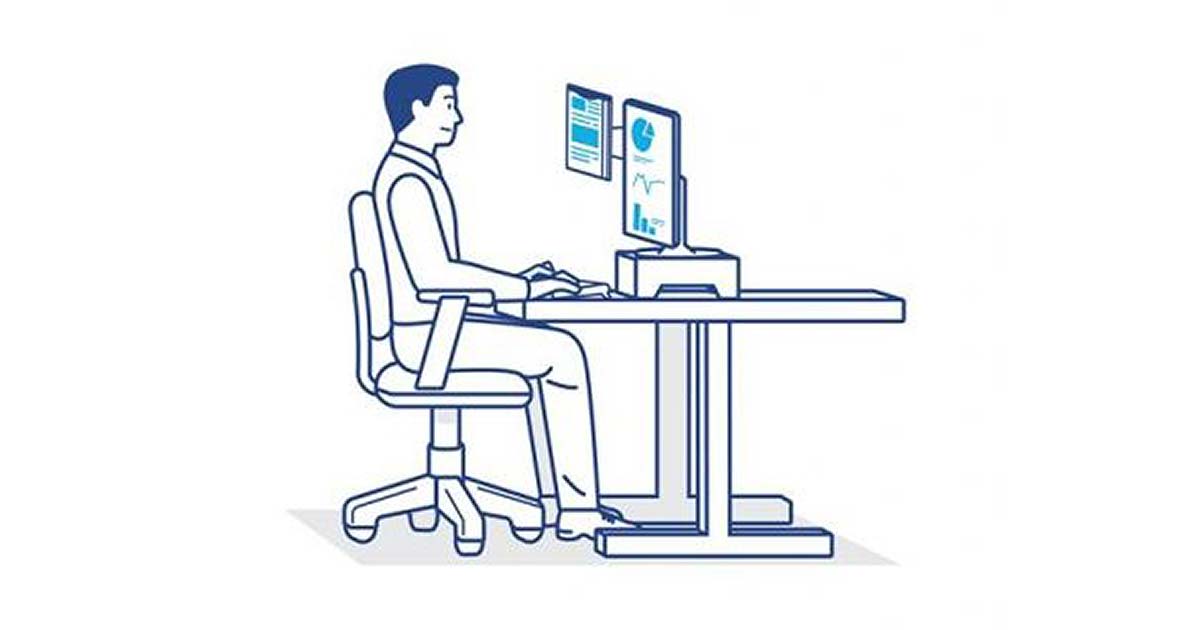
Advice to improve your movement, fitness, and overall health from the #1 in orthopedics in the U.S.
5 Items to Make Your Work-from-Home Setup More Ergonomic
From chairs to wrist rests, biomechanics expert Jon Cinkay breaks down the top five items to help you feel better at your WFH desk.
Advice to improve your movement, fitness, and overall health from the #1 in orthopedics in the U.S.
Hours spent every day using a computer, smartphone or tablet can take a toll on your muscles and joints. Luckily, there are many things you can do to make screen time more comfortable, including purchasing a few items to enhance the ergonomics of your setup. HSS physical therapist and body mechanics expert Jon Cinkay suggests starting with these five.

1. Footstool
To avoid discomfort at your desk, your feet should be resting on the floor, with your knees bent at a 90-degree angle, says Cinkay. But if your feet don't touch, a footstool can help.
Footstools come in a variety of shapes and materials. Cinkay suggests looking for ones that are able to tilt forward or backward. Many people tend to find these more comfortable than a basic flat stool.
2. Wrist rest
Pain in the wrists and hands is not uncommon among people who spend hours each day using a keyboard. The way to avoid wrist pain, says Cinkay, is to keep your wrists in neutral, or a flat position, for as long as possible. "You really don't want your wrists flexed or extended in any way," he says.
If your setup at home does not allow for your wrists to be flat, a wrist rest can help in this endeavor. Though, as Cinkay notes, it's really the lower palm of your hand, not your wrist, that should be in contact with the rest.
As with footstools, wrist rests come in different designs and materials. Cinkay likes gel ones for their ability to evenly redistribute pressure but cautions against getting so cozy that you wind up placing more pressure on your wrists than needed.
If you're really feeling the strain and want added support, there are also wrist rests for your mouse. Same rules apply: Your wrist should be in a neutral position while using the mouse. And it should be your lower palm, not your wrist, that comes in contact with the rest.
3. Laptop stand and external keyboard or mouse
Hours spent looking down at a laptop screen are a common cause of neck pain. If that sounds like your situation, Cinkay advises using a separate keyboard and mouse. "Freeing yourself from the built-in keyboard and touchpad allows you to raise your laptop to the proper height for your eyes," he says. This in turn enables you to maintain a neutral position for your head and neck as well as that all-important 90-degree bend in your elbows.
If placing your laptop on a stack of books isn't your style, try adding a laptop stand, or even an external monitor, to the mix. These two items can help make sure that the screen is at the proper height and distance from your eyes.
4. Headset
If you spend a lot of time on the phone and haven't invested in a headset yet, now may be the time. The key advantage of a headset is that it allows you to keep your head in a neutral position, minimizing neck pain and freeing your hands up for multitasking.
5. Adjustable desk chair
Most desk chairs have multiple levers that adjust different parts of the chair. These settings ensure that the chair is right for your body, no matter your height. But where to begin when there are so many options?
"You want a chair that's as adjustable as possible," says Cinkay. Every desk chair should have an adjustable seat height to set you up for 90-degree bends at your elbows, hips and knees. Most chairs also allow you to tilt backward. This is important because without this adjustability, you may find yourself slouching or perched on the edge of your seat.
Not every chair has armrests, but if you choose one that does, make sure they fit under your desk or table. Otherwise, you need to lean forward or hold your arms at an uncomfortable angle in order to reach the keyboard and mouse.
Last but not least, try to find a chair with a warranty. Cinkay recommends at least a 30-day warranty. "You need about two to three weeks to know if a chair is working for you."
If the items listed above are not in the cards for you, all is not lost. One of the best things you can do to feel more comfortable during work hours is to get up and move, says Cinkay. Whether you are working from the kitchen table, the couch, the bed, or even a desk, "it's important to move around at least once an hour," he says. "Simply getting up and walking around is an excellent way to stretch your muscles and reset your posture."
Published 12/29/2020


